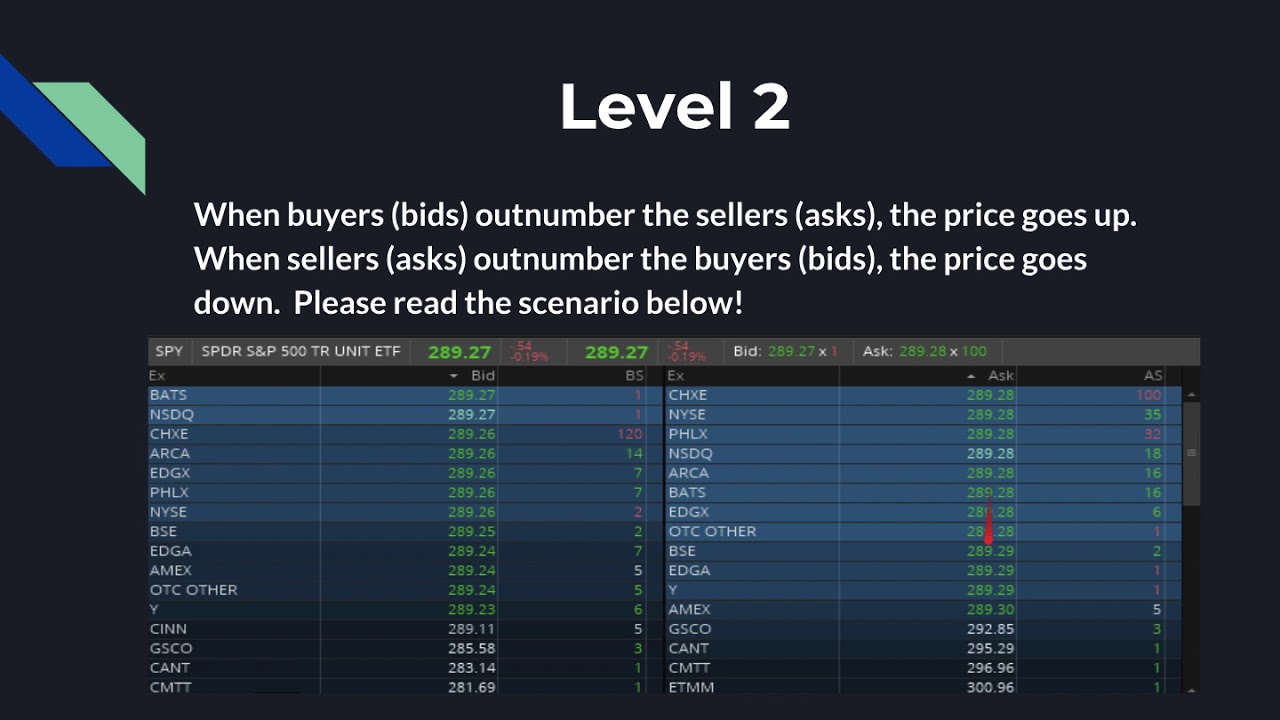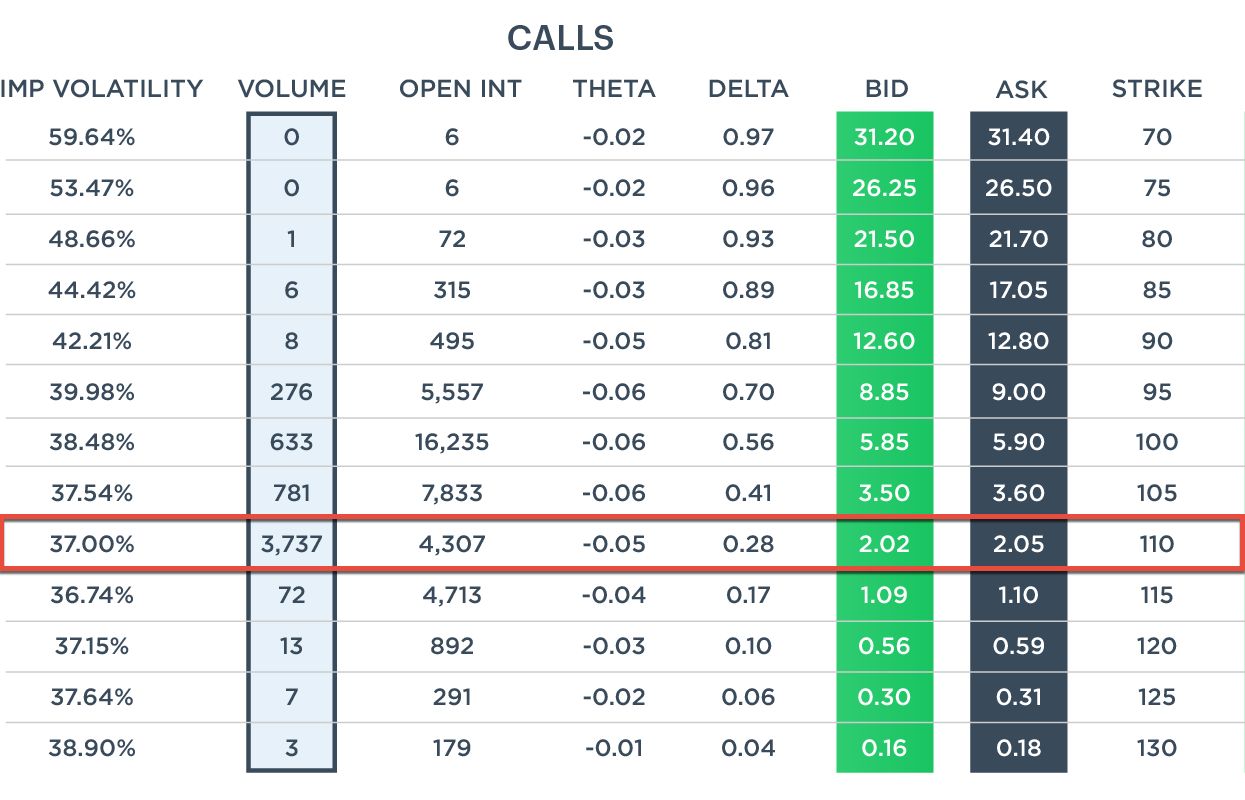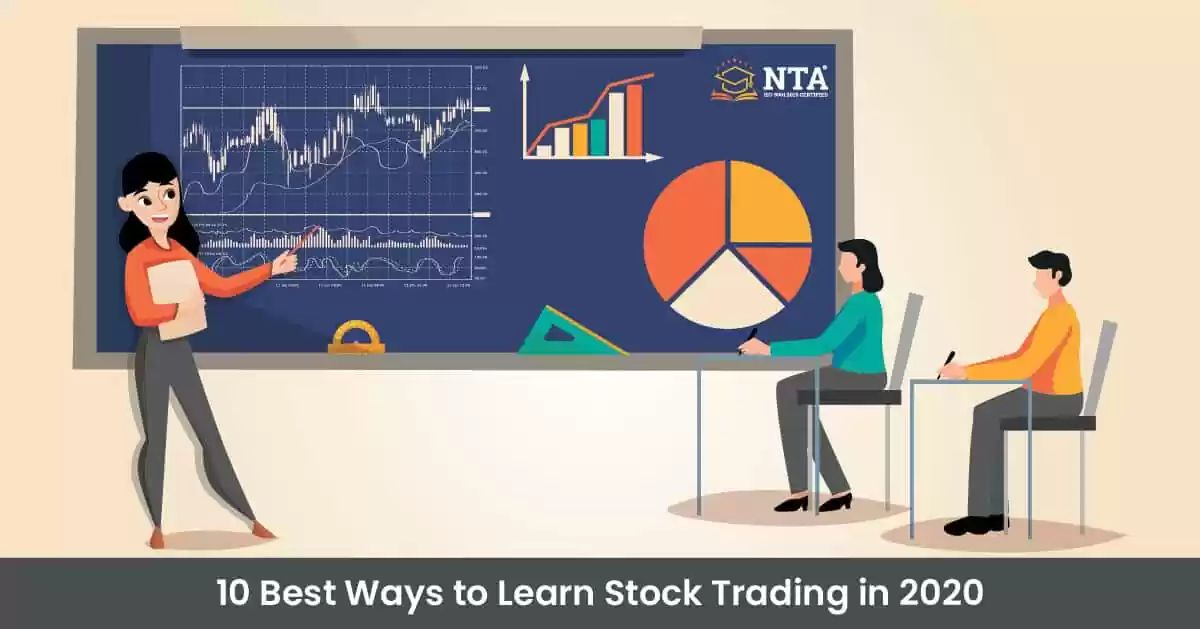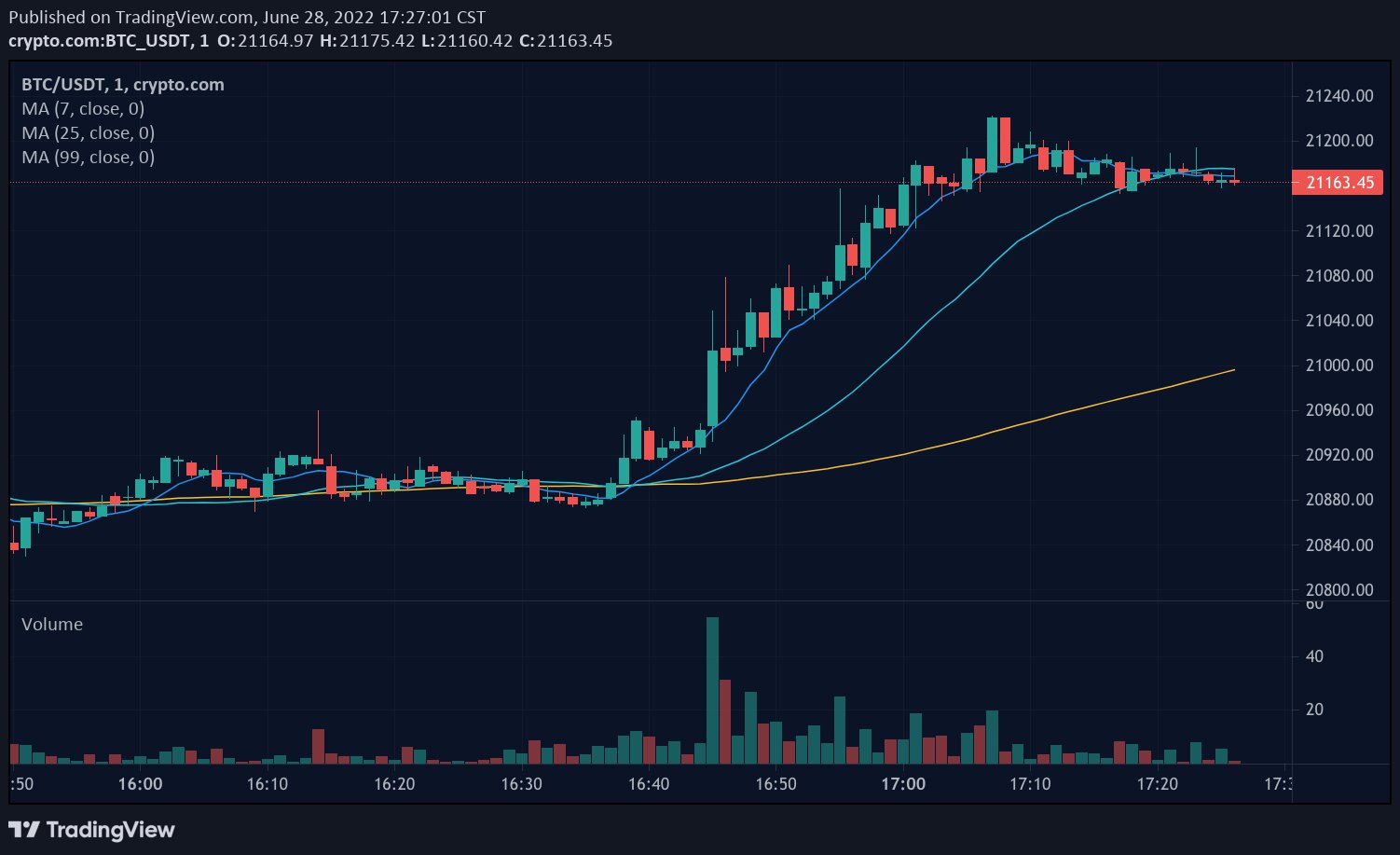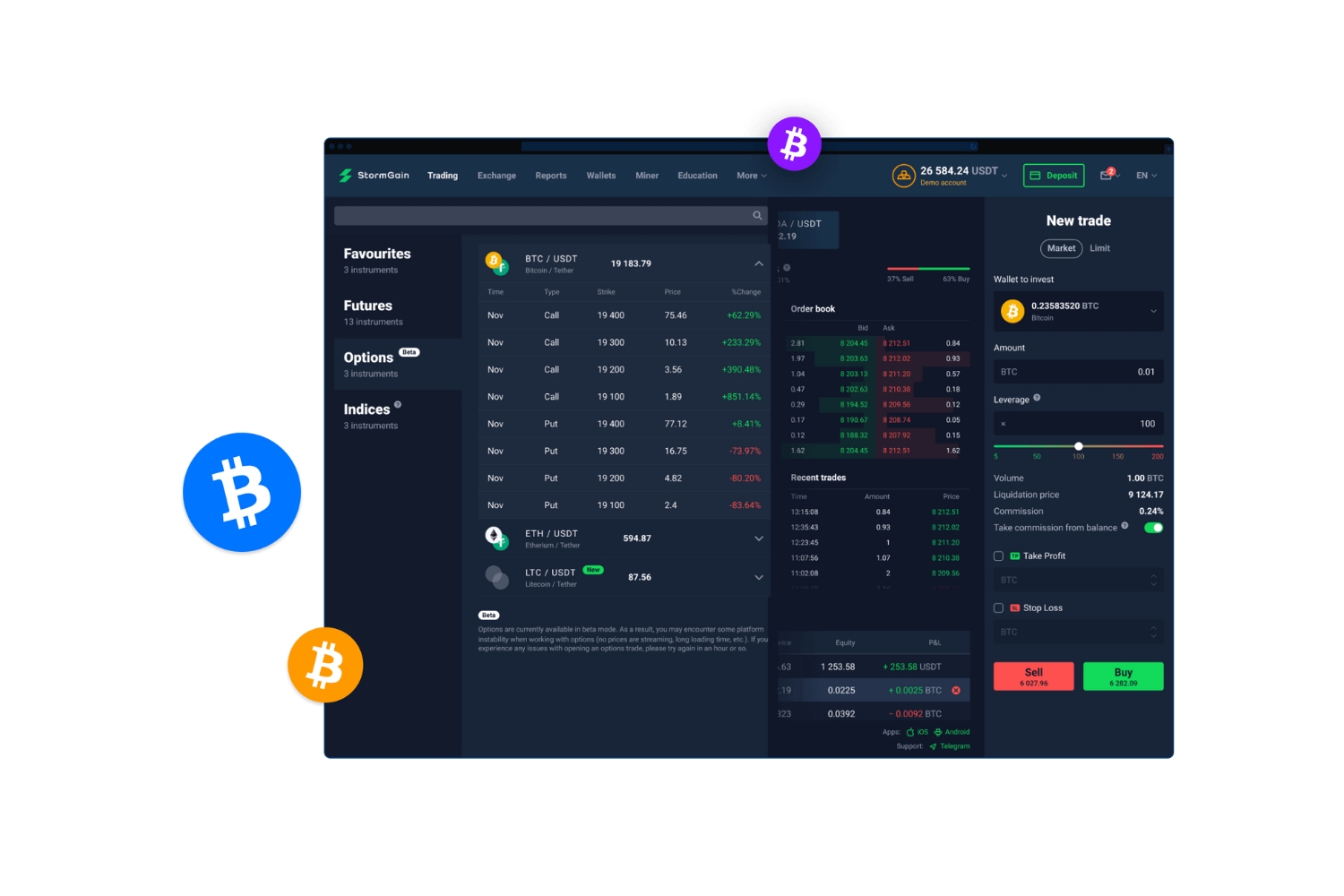Introduction
Welcome to the world of options trading! If you’re new to the game or looking to level up your trading strategies, you might have come across the term “Level 2 options trading.” This advanced trading level offers additional benefits and opportunities to experienced traders, but it’s essential to understand what it entails and the requirements to qualify for it.
Options trading is a type of financial instrument that gives traders the right, but not the obligation, to buy or sell an asset at a specified price within a predetermined timeframe. It provides traders with flexibility and leverage, allowing them to capitalize on market movements without directly owning the underlying asset.
Option levels are a system of classifications that brokerages use to determine the types of options trading strategies a trader can employ. They help ensure that traders have the necessary knowledge and experience to employ more complex trading strategies.
Level 2 options trading is the second tier in the option levels system. It offers more advanced trading capabilities compared to Level 1, enabling traders to execute more complex options strategies. However, gaining access to Level 2 options trading requires meeting specific criteria set by brokerages.
In this article, we will delve into the world of Level 2 options trading, exploring what it entails, the requirements to qualify for it, the benefits it offers, and the risks and considerations involved. We will also discuss some strategies that can be employed at this level to maximize trading success.
So, whether you’re a seasoned trader looking to expand your trading horizons or a newcomer seeking to learn more about the options market, let’s dive into the world of Level 2 options trading and discover the potential it holds.
What is Options Trading?
Options trading is a type of financial trading that involves the buying and selling of options contracts. An option is a derivative financial instrument that gives the holder the right, but not the obligation, to buy or sell an asset at a specified price within a predetermined timeframe.
The underlying assets for options can vary widely and can include stocks, ETFs (Exchange-Traded Funds), commodities, and indices. Options provide traders with flexibility and leverage, allowing them to profit from market movements without directly owning the underlying asset.
There are two main types of options: call options and put options. A call option gives the holder the right to buy the underlying asset at the strike price before the expiration date. Conversely, a put option gives the holder the right to sell the underlying asset at the strike price before the expiration date.
Options trading can be used for various purposes, including speculation, hedging, and income generation. Traders can use options to take advantage of expected price movements, protect their existing investments from downside risk, or generate additional income through options selling strategies.
One of the key benefits of options trading is its flexibility. Unlike traditional stock trading, options allow traders to profit in both rising and falling markets. Traders can take bullish positions by buying call options, bearish positions by buying put options, or even use more advanced strategies that combine options to create specific risk and reward profiles.
It’s important to note that options trading carries inherent risks, as options contracts are time-limited and can expire worthless if the underlying asset does not move in the anticipated direction. Therefore, proper risk management and understanding of options strategies are crucial for success in options trading.
In the next section, we will explore the concept of option levels and how they categorize traders based on their experience and knowledge in the options market.
Understanding Option Levels
Option levels are a classification system used by brokerages to determine the trading privileges and options strategies available to individual traders. These levels are designed to ensure that traders have the necessary knowledge and experience to engage in more complex options trading strategies.
Option levels typically range from Level 1 to Level 4, with each level unlocking a higher degree of trading capabilities. As traders gain experience and display a track record of responsible trading, they may be eligible to move up to higher option levels.
Level 1 options trading is the introductory level and is accessible to all traders who meet the minimum requirements set by their brokerage. At this level, traders are typically permitted to engage in basic options strategies, such as buying or selling covered calls. Covered calls involve selling call options against a long position in the underlying asset.
Level 2 options trading is the next level and provides traders with more advanced trading privileges. At this level, traders have the ability to employ additional options strategies, such as buying or selling puts and calls, as well as spreads. Spreads involve simultaneously buying and selling options contracts with different strike prices or expiration dates to hedge risk or capitalize on market inefficiencies.
Level 3 options trading is an even higher level and grants traders access to more complex strategies, including advanced spreads, such as iron condors and butterfly spreads. These strategies involve multiple options contracts with different strike prices and expiration dates, allowing traders to profit from specific market conditions.
Level 4 options trading is the highest level and is typically reserved for professional traders or those with extensive experience in the options market. Traders at this level have the ability to engage in complex strategies, such as naked options selling, which involves selling options contracts without owning the underlying asset.
It’s important to note that the specific requirements and trading privileges associated with each option level may vary between brokerages. Some brokerages may have additional criteria, such as minimum account balance or trading volume, to qualify for higher option levels.
Understanding the concept of option levels is essential for traders looking to navigate the options market effectively. It helps ensure that traders have the necessary knowledge and experience to engage in options trading strategies appropriate for their skill level.
In the next section, we will explore Level 2 options trading in more detail, including how it differs from other levels and the benefits it offers to traders.
Level 2 Options Trading Explained
Level 2 options trading is the second tier in the option levels system and offers more advanced trading capabilities compared to Level 1. At this level, traders have the ability to utilize a wider range of options strategies to potentially profit from market movements.
With Level 2 options trading, traders can not only buy and sell options but also execute more complex options strategies, such as vertical spreads, diagonal spreads, and calendar spreads. These strategies involve combining multiple options contracts with different strike prices and expiration dates to create specific risk and reward profiles.
Vertical spreads, for example, involve simultaneously buying and selling options contracts with the same expiration date but different strike prices. This strategy allows traders to potentially profit from a directional move in the underlying asset while limiting their risk exposure.
Diagonal spreads, on the other hand, involve combining options contracts with different expiration dates and strike prices. This strategy can be used to take advantage of time decay while still maintaining a directional bias on the underlying asset.
Calendar spreads are similar to diagonal spreads but involve options contracts with the same strike price and different expiration dates. This strategy allows traders to profit from volatility contraction or time decay in the options market.
Level 2 options trading provides traders with increased flexibility and the ability to tailor their strategies to specific market conditions. By utilizing advanced options strategies, traders can enhance their potential for profit and manage risk more effectively.
It’s important to note that while Level 2 options trading offers more opportunities, it also requires a higher level of knowledge and experience. Traders should have a solid understanding of options pricing, volatility, and risk management before engaging in Level 2 trading.
Additionally, traders should be aware of the potential risks involved in Level 2 options trading. As strategies become more complex, the potential for larger losses also increases. Traders must carefully manage their positions and have a clear understanding of the potential risks and rewards of each strategy.
In the next section, we will explore the requirements to qualify for Level 2 options trading and how traders can work towards attaining this level.
How to Qualify for Level 2 Options Trading
Qualifying for Level 2 options trading requires meeting specific criteria set by brokerages. While the exact requirements may vary between brokerages, there are common factors that determine eligibility for this advanced trading level.
First and foremost, brokerages typically require traders to have a certain level of experience and knowledge in options trading. This may include a minimum number of months or years actively trading options or completing educational courses on options trading.
In addition to experience, brokerages often consider a trader’s financial standing when determining eligibility for Level 2 options trading. Traders may need to meet specific account balance requirements or demonstrate a certain level of trading activity and volume in their account.
Some brokerages may require traders to pass a qualification process or assessment to demonstrate their understanding of options trading strategies and risk management. This can involve completing quizzes, questionnaires, or simulated trading exercises to assess a trader’s proficiency in options trading.
It’s important to note that brokerages have different policies and requirements, so aspiring traders should consult with their specific brokerage to understand the qualifications for Level 2 options trading.
For those looking to qualify for Level 2 options trading, it is essential to build a solid foundation of options trading knowledge and experience. This can be achieved through educational resources, such as books, online courses, or seminars, that focus on options trading strategies and risk management.
Traders can also practice trading options through paper trading or using virtual trading platforms offered by brokerages. This allows them to gain hands-on experience without risking real capital and helps build confidence in executing options trades.
Focusing on proper risk management is crucial when aiming for Level 2 options trading. Understanding how to calculate potential profit and loss, manage position sizes, and set stop-loss orders are essential skills to mitigate risk effectively.
By demonstrating a solid understanding of options trading, a track record of responsible trading, and meeting the specific requirements of their brokerage, traders can qualify for Level 2 options trading and gain access to more advanced options strategies.
In the next section, we will explore the benefits that Level 2 options trading offers to traders.
Benefits of Level 2 Options Trading
Level 2 options trading offers a range of benefits to experienced traders looking to expand their trading capabilities. By gaining access to more advanced options strategies, traders can take advantage of new opportunities and potentially enhance their trading outcomes. Here are some of the benefits of Level 2 options trading:
1. Increased Profit Potential: Level 2 options trading allows traders to utilize a wider range of strategies, such as spreads and combinations, that can potentially lead to higher profits. These strategies can help traders capitalize on market inefficiencies, volatility, and directional price movements.
2. Risk Management Opportunities: With Level 2 options trading, traders have the ability to employ sophisticated risk management techniques. Strategies like spreads and combinations can help limit risk exposure and provide built-in protection against adverse market conditions.
3. Flexibility and Versatility: Level 2 options trading provides traders with greater flexibility in tailoring their strategies to specific market conditions and trading objectives. Being able to use advanced options strategies allows traders to adapt to changing market dynamics and potentially profit in various market environments.
4. Improved Probability of Success: With Level 2 options trading, traders can employ options strategies that focus on probability and statistical advantage. By utilizing strategies like credit spreads or iron condors, traders can increase the likelihood of profitable trades by taking advantage of favorable market conditions.
5. Enhanced Income Generation: Level 2 options trading offers opportunities for generating consistent income. By selling options contracts, such as covered calls or cash-secured puts, traders can collect premiums and earn income in addition to potential capital appreciation.
6. Efficient Use of Capital: Options trading allows traders to control a larger position in the underlying asset with a fraction of the cost compared to outright buying or selling. This leverage can provide the opportunity to achieve higher returns on invested capital.
7. Diversification: Level 2 options trading enables traders to diversify their trading strategies and spread their risk across different asset classes or market sectors. This diversification can help mitigate the impact of individual stock or market movements on the overall trading portfolio.
It’s important for traders to carefully consider the potential risks and rewards associated with Level 2 options trading and undertake thorough analysis and risk management before executing any options trades.
In the next section, we will explore the risks and considerations that traders should be aware of when engaging in Level 2 options trading.
Risks and Considerations of Level 2 Options Trading
While Level 2 options trading offers numerous benefits, it’s important for traders to be aware of the potential risks and considerations associated with this advanced trading level. Here are some key factors to consider:
1. Increased Complexity: Level 2 options trading involves more advanced options strategies, which can be more complex to understand and execute. Traders must have a solid understanding of options pricing, volatility, and risk management to navigate these strategies effectively.
2. Higher Potential for Losses: As options strategies become more complex, the potential for larger losses also increases. It’s essential for traders to have a clear understanding of the potential risks and rewards of each strategy and implement proper risk management techniques.
3. Market Volatility: Options trading, especially more advanced strategies, can be highly sensitive to market volatility. Traders should be prepared for price fluctuations in the underlying asset, as this can impact the profitability of options trades.
4. Time Decay: Options contracts have expiration dates, and as they approach expiration, their value can diminish rapidly due to time decay. Traders must consider the impact of time decay when selecting options strategies and managing their positions.
5. Liquidity Concerns: Certain options strategies, such as exotic spreads or options on less actively traded assets, may have limited liquidity. Traders should be cautious when trading illiquid options, as it can be challenging to enter or exit positions at desired prices.
6. Margin Requirements: Some Level 2 options strategies, such as selling naked options or engaging in complex spreads, may require traders to meet specific margin requirements. It’s important to have sufficient account capital to meet these requirements and understand the implications of using margin in options trading.
7. Psychological Considerations: Trading options at a higher level can introduce additional psychological pressures. Traders should be prepared to manage emotions, such as fear and greed, and avoid making impulsive or emotional trading decisions.
8. Regulatory Compliance: As Level 2 options trading involves more advanced strategies, traders should ensure they comply with all relevant laws and regulations. It’s important to familiarize oneself with the options trading rules and requirements set by regulatory bodies and the brokerage.
Traders should carefully weigh the potential risks against the benefits and consider their personal risk tolerance, financial goals, and trading capabilities before engaging in Level 2 options trading. Proper risk management, continuous education, and diligent analysis are crucial for success in this advanced trading level.
In the next section, we will explore some strategies that can be employed in Level 2 options trading to maximize trading success.
Strategies for Level 2 Options Trading
Level 2 options trading opens up a wide range of strategies for experienced traders to maximize their trading success. Here are some strategies that traders can employ at this advanced trading level:
1. Vertical Spreads: Vertical spreads involve buying and selling options contracts with the same expiration date but different strike prices. Traders can use bullish or bearish vertical spreads to capitalize on directional price movements while managing risk through limited loss potential.
2. Iron Condors: Iron condors are advanced options strategies that involve simultaneously selling an out-of-the-money call spread and an out-of-the-money put spread. Traders can profit from a sideways market, as long as the price of the underlying asset stays within a specified range.
3. Diagonal Spreads: Diagonal spreads combine options contracts with different expiration dates and strike prices. Traders can use diagonal spreads to capitalize on time decay and profit from the expected movement of the underlying asset over a more extended period.
4. Butterfly Spreads: Butterfly spreads involve buying and selling options contracts with three different strike prices. This strategy allows traders to profit from low volatility and a range-bound market, with maximum profit occurring when the underlying asset settles at the middle strike price at expiration.
5. Covered Calls: Covered calls involve selling call options against a long position in the underlying asset. This strategy allows traders to generate income from the premiums received while potentially benefiting from capital appreciation if the price of the underlying asset remains stable or increases slightly.
6. Cash-Secured Puts: Cash-secured puts involve selling put options and setting aside 100% of the cash required to fulfill the obligation of purchasing the underlying asset if the options are exercised. Traders can collect premiums from selling puts and, if the put options expire worthless, keep the premium as profit.
7. Straddles and Strangles: Straddles and strangles involve buying both a call and a put option with the same expiration date. Traders can employ these strategies when expecting significant volatility or an upcoming event that is likely to cause a substantial price movement in the underlying asset.
It’s crucial for traders to thoroughly analyze each strategy, understand their risk-reward profile, and select the most appropriate strategy based on market conditions and trading objectives. Risk management, position sizing, and proper timing of trades are essential for successful implementation of these strategies.
Additionally, it’s recommended for traders to explore options trading education resources, attend seminars, and engage with experienced traders to further enhance their knowledge and understanding of advanced options strategies.
In the next section, we will wrap up our exploration of Level 2 options trading with a brief recap of the key points discussed.
Conclusion
Level 2 options trading offers experienced traders the opportunity to expand their trading capabilities and potentially enhance their profits in the options market. By meeting the requirements set by brokerages and gaining access to more advanced options strategies, traders can take advantage of increased flexibility, risk management techniques, and profit potential.
Understanding options trading, option levels, and the specific requirements for Level 2 options trading is essential for aspiring traders. Building a solid foundation of options knowledge, practicing risk management, and continuously learning are crucial for success at this advanced level.
While Level 2 options trading brings numerous benefits, it’s important for traders to be aware of the potential risks associated with advanced strategies, such as increased complexity, higher potential for losses, and market volatility. Proper risk management, education, and thorough analysis are key to navigating these risks effectively.
By employing strategies like vertical spreads, iron condors, butterfly spreads, covered calls, and others, traders can tailor their approach to market conditions and trading objectives. Selecting the right strategy, timing trades accurately, and implementing proper risk management techniques are vital for success.
Level 2 options trading is an advanced level that requires commitment, continuous learning, and responsible trading practices. Traders must also ensure compliance with all relevant laws and regulations governing options trading.
As you venture into Level 2 options trading, remember to stay informed, remain disciplined, and adapt your strategies as needed. With the right knowledge, skills, and mindset, Level 2 options trading can open up a world of opportunities in the dynamic and exciting options market.







